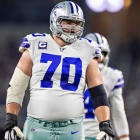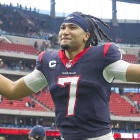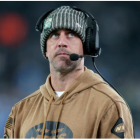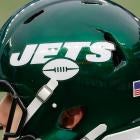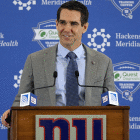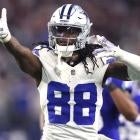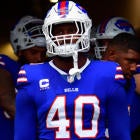Note: This is the second of two Key Matchup posts we'll be running for Super Bowl LI. The first post, which went up on Thursday, focused on the Atlanta Falcons offense vs. the New England Patriots defense.
At the risk of sounding like a broken record within the confines of this Key Matchup series: the blueprint for slowing down the New England Patriots offense has been set for years. The key, as always, is pressure.
Like every other quarterback, Tom Brady is not nearly as effective when under pressure as he is when throwing from a clean pocket. The split in 2016 was not quite as drastic as some previous years, but still it was still apparent: Brady had a 123.0 passer rating from a clean pocket and an 84.9 mark when hit or hurried.
It's important not to go all out to get that pressure, though. Brady is arguably the NFL's best quarterback against the blitz. There is nobody better at identifying where the rushers are coming from, spotting which of his receivers will come open after the snap, and then delivering the ball to that play quickly and accurately. Brady torched defenses to the tune of a 129.6 passer rating when blitzed this season, completing 66 percent of his passes at 9.0 yards per attempt while throwing 16 touchdowns and only one interception.
So, the Falcons have a tough balance to strike. Attempting to get pressure without resorting to the blitz will not represent a change in strategy for Dan Quinn's defense -- the Falcons had a blitz rate of 19.9 percent this season, one of the five lowest rates in the NFL, per Pro Football Focus -- but they'll have to get ace performances from NFL sack leader Vic Beasley and Dwight Freeney on the edge (Adrian Clayborn is unfortunately done for the year), as well as Grady Jarrett, Ra'Shede Hageman, and Jonathan Babineaux up the middle. Tyson Jackson, Courtney Upshaw, and Joe Vellano will factor in as well. (The Falcons have ramped up their blitz rate in the postseason and they've gotten more pressure by doing so, but that's dangerous against Brady.)
They'll all have to consistently win one-on-one matchups against the man across from them along the offensive line and find a way to knock Brady off his spot before he's able to identify the open man and deliver. Brady is capable of maneuvering within the pocket but he's far better when he can simply hit the top of his drop and let it fly. And if he has to make more than one move before letting go of the ball, it's much more difficult for him.

Luckily for New England, rare is the occasion where Brady actually has to do that. The New England offensive line kept his pocket clean on 69 percent of his drop backs this season, per PFF, and that number has risen to nearly 72 percent in the playoffs. Given that rate of pressure on Sunday, he'll be able to mostly sit in the pocket and pick the defense apart as Josh McDaniels schemes his receivers open with crossers, seam routes, and the occasional deep shot down the sideline.
Why clock control is key
It will also be important, though, for the Patriots to be methodical and control the clock. The Falcons would be perfectly content to turn this game into a track meet and simply try to outscore Brady and company. Matt Ryan directed the eighth-highest scoring offense in NFL history this season, and if the Falcons have to win this game by either trying to shut Brady down or trying to match him score for score, the Falcons would almost definitely rather go shot for shot. If New England controls the ball and gives Atlanta fewer opportunities, the Falcons will be under more pressure to make them count.
To control the ball and the clock, the Pats will rely on two things: Brady's ability to identify a weakness and get the ball out quickly, and the twin talents of running backs LeGarrette Blount and Dion Lewis.
Brady is among the most willing quarterbacks in the league to just sit back and complete short pass after short pass to work the ball down the field. Think of the Super Bowl against the Seahawks a couple years ago, where 25 of his 37 completions went for fewer than 10 yards. None of those throws were killing blows to the Seattle defense, but their cumulative effect helped matriculate the ball down the field and keep the time of possession battle in New England's favor: the Pats controlled the ball for 34 minutes compared to Seattle's 26 in that game.
This year, Brady's short passing game was just as on point as ever.
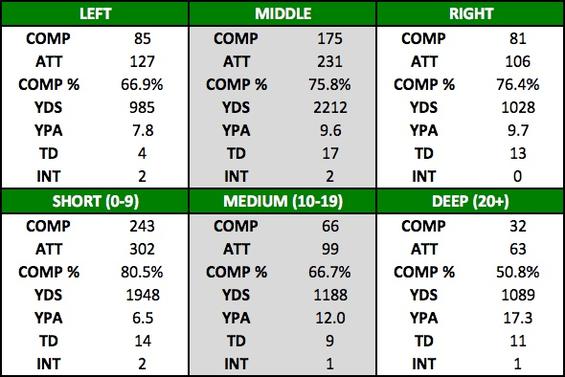
Conversely, the Falcons were among the NFL's worst teams at defending short passes this season, ranking 26th in Football Outsiders' DVOA on passes within 15 yards of the line of scrimmage.
Julian Edelman has been Brady's go-to receiver in pretty much all situations since Rob Gronkowski went down for the year and things should be no different this Sunday. Edelman operates all over the field and runs slants, quick outs, whip routes, and more. He's lightning quick and can beat almost any corner out of his breaks. If he and Brady are on the same page, they're almost impossible to stop. They don't care if it's a 2-yard completion; they'll just take it and keep moving on the next down.
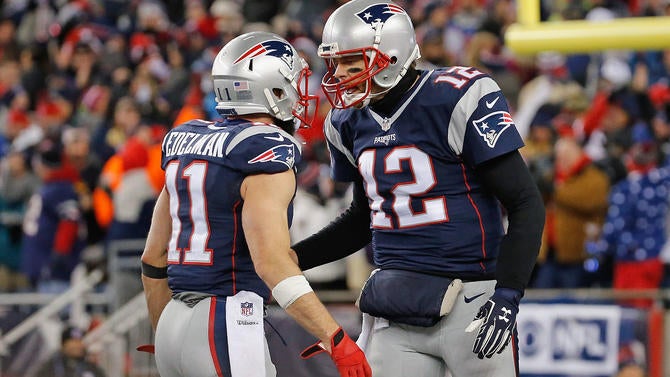
Danny Amendola acts as a kind of Edelman-lite. Martellus Bennett works the seam. Dion Lewis and James White are multi-faceted backs that can take swing passes, screens, and option routes out of the backfield while also lining up out wide or in the slot as receivers, running every route in the tree. All of them will be integral to Brady's quick-hit attack. The more he peppers them with short, quick passes, the more the Falcons defense will have to press up toward the line of scrimmage, opening things up for Chris Hogan to go over the top like he did during the AFC title game against Pittsburgh.
A back for every situation
It's not just Brady that will bear the burden of working the clock, though. Blount and Lewis will be involved as well. New England likes rotate its backs throughout the game, cycling through depending on down, distance, score, and whatever tempo it wants to dictate on any given drive.
While they couldn't be more different physically, the Patriots actually use a similar slate of running plays to attack with their two lead backs. Blount is more of a (pardon the pun) blunt instrument, pounding through the line and using his physicality to punish the defenders in front of him. Lewis hops, skips, and then slices through holes, Le'Veon Bell-style.

It wouldn't be a surprise to see the Patriots attack with a series runs to the right side of the field in particular, given that it was their stronger direction when running the football this season and that the Falcons were weaker against runs to the right side as well. (That's Vic Beasley's side of the field. One way to neutralize him is running directly at him and using his aggressiveness against him.) If they can manage to get things going on the ground, that will also open up the play-action passing game, one of Brady's greatest weapons.
When the Patriots get the quick passing game, the running game, and the play-action game going, you can't stop them. That's what the Falcons will have to prevent this Sunday.











